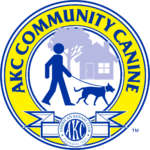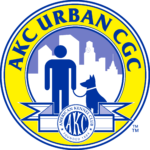Understanding your dog’s behavior is crucial for effective training and fostering a strong bond with your furry friend. As a local trainer in Syracuse, UT, I’ve seen firsthand how a deeper comprehension of canine behavior can transform the relationship between dogs and their owners. In this guide, we’ll explore the basics of dog behavior, common behavioral issues, the role of environment and routine, behavioral signals, and tips for managing and modifying behavior.
The Basics of Canine Behavior
While dogs do vocalize to communicate, they primarily use body language. Understanding these behaviors is key to effective training and a harmonious relationship. Common behaviors such as tail wagging, barking, and different postures can indicate various emotions and intentions. For example, a wagging tail often signifies excitement, but a slow, low wagging tail can indicate nervousness.
Breed, age, and individual temperament significantly influence behavior. Dogs have been bred for generations for specific purposes. Different breeds will naturally be more inclined to certain behaviors. For example a dachshund is more likely to dig than a border collie. Recognizing these nuances helps in tailoring training approaches to each dog’s unique needs.
Common Behavioral Issues and Their Causes
Many dog owners face common behavioral issues such as excessive barking, digging, and chewing. Understanding the underlying causes of these behaviors is essential for effective management.
- Barking can stem from boredom, anxiety, or a response to environmental stimuli.
- Digging often results from a dog’s natural instinct to hunt or create a comfortable resting spot.
- Chewing can be due to teething in puppies, boredom, or anxiety in older dogs.
Distinguishing between normal behaviors and those requiring intervention is crucial. For instance, barking to alert to a stranger approaching the home, or barking in play is normal. Incessant barking, especially if left alone can be a sign of anxiety however.
The Role of Environment and Routine

A dog’s environment plays a significant role in shaping their behavior. A well-structured, stimulating environment can prevent many behavioral problems.
- Consistency and Structure: Dogs thrive on routine. Regular feeding times, walks, and play sessions provide a sense of security and predictability.
- Stimulating Environment: Provide toys, interactive games, and regular exercise to keep your dog mentally and physically engaged. A bored dog is more likely to develop unwanted behaviors.
Creating an enriching environment involves ensuring your dog has a safe, comfortable space to retreat to and plenty of opportunities for social interaction and physical activity.
Behavioral Signals and What They Mean
Understanding your dog’s body language and vocalizations is vital for interpreting their behavior accurately.
- Body Language: Tail position, ear posture, and facial expressions convey a lot about a dog’s emotional state. For example, an anxious dog may show signs such as tail tucking, showing the whites of their eyes, and lip licking. A relaxed or content dog will likely have loose body language and “soft” eyes.
- Vocalizations: Barks, whines, and growls serve various purposes depending on their context. A dog may bark to indicate a possible threat or express excitement.
Recognizing play behavior versus aggressive behavior is also important. Playful dogs may exhibit exaggerated movements, play bows, and gentle mouthing, while aggressive behavior includes stiff body posture, direct staring, and raised hackles.
Tips for Managing and Modifying Behavior
Managing and modifying behavior involves a combination of prevention, positive reinforcement, and consistency.
- Preventing Unwanted Behaviors: Ensure your dog gets enough exercise and mental stimulation. Boredom is the largest motivator for destruction. Mental stimulation can also help to ease a dog’s anxiety.
- Positive Reinforcement: Reward desired behaviors with treats, praise, or playtime. This encourages your dog to repeat those behaviors.
- Consistency: Be consistent with commands and rewards. Inconsistent training can confuse your dog and hinder progress. Have clearly set rules and boundaries for your dog.
When to seek professional help: If your dog’s behavior doesn’t improve with these strategies or if they exhibit severe behavioral issues such as aggression or reactivity, consulting a professional trainer is essential. At Century Dog Training, we offer personalized training plans tailored to each dog’s needs.
Conclusion
Understanding your dog’s behavior is the foundation for effective training and a strong, loving relationship. By recognizing common behaviors, addressing their causes, and creating an enriching environment, you can enhance your dog’s well-being and your bond with them.
At Century Dog Training, we are here to help you every step of the way with personalized advice and training tailored to your dog’s needs. Reach out to us today and discover how we can help you and your dog thrive together.





